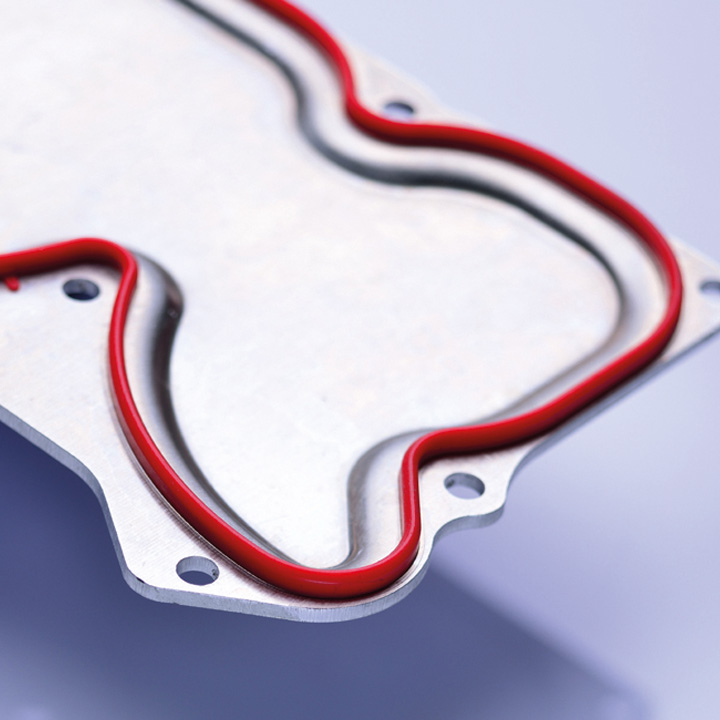Composite technology
This technology term includes: Rubber plastic composite parts, rubber metal composite parts, silicone plastic composite parts, and silicone metal composite parts. Composite parts consist of a fixed connection between two different components. Normally an elastic material is vulcanised onto a solid substrate.
Suitable metallic substrates are:
- Aluminium, zinc, magnesium die castings
- Aluminium, steel or stainless steel turned parts
- Pressed parts
- Stamped or bent sheets of aluminium, steel, stainless steel, etc.
Suitable plastic substrates are:
- PA
- PPS
- PBT
- PPA
- PEEK
Advantages of the composite technology:
- Best elastomer adhesion to the plastic part
- No additional assembly steps
- Quick cycle times
- Low handling
- High degree of automation
- Stable production processes
- Economical part price
Proper pre-treatment is crucial for a permanently good bond.
We have used all suitable pre-treatment processes in series production for many years. The latest technology is a special pre-treatment for cast parts in series production. This allows demanding tasks for composite parts to be implemented economically.
Composite parts are used in a wide variety of applications in all areas – be it as seals in control units in vehicles, as a damping element in vehicle or aircraft construction or as a shower head for home use.
Composite parts are used in a wide variety of applications in all areas – be it as seals in control units in vehicles, as a damping element in vehicle or aircraft construction or as a shower head for home use.



